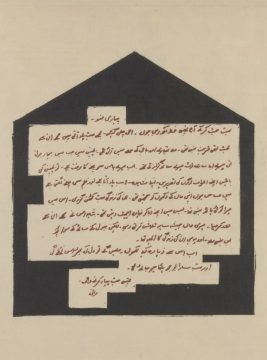Kamila Shamsie in Tate Etc:

It is worth mentioning here that it’s widely believed that the greatest piece of writing – indeed, the greatest piece of art – created about Partition is a short story, called ‘Toba Tek Singh’, just a handful of pages long, by the Urdu writer Saadat Hasan Manto. The story is about the (and I’m using the language of the time) inmates of a lunatic asylum in the district of Toba Tek Singh, near Lahore. When Partition takes place, the lunatics must be divided between India and Pakistan. It ends with one of the inmates lying down in no man’s land, muttering nonsense words: ‘Upar di gur gur di annexe di be-dhiyana mung di daal of di Toba Tek Singh and Pakistan’. A rough translation would go: ‘Upstairs the rumbling the annex the heedlessness the lentils of Toba Tek Singh and Pakistan’. A man speaking nonsense words in a world where reality is beyond what words can convey – that is part of the effectiveness of this story. The Partition of word and meaning. The inability of language to make sense of what is going on, except through conveying senselessness.
It is certainly true that sometimes the linearity of language, the logic of first this-then this-then this, words become sentences become paragraphs – sometimes that seems too neat, too false, to convey a shattering, a sundering.
I’ve felt this in my own writing. Some years ago, when writing about the dropping of the atom bomb on Nagasaki, I knew the moment of the bomb detonating could only be depicted by two blank pages – the closest thing to a flash of white light I could put on a page.
If I had to invent a story about my life as a writer leading up to the moment of those two blank pages, it would start with me looking and looking at that framed letter on the wall and choosing not to read it. That was the moment when I first knew that sometimes words are not what you need to convey the weight of a particular kind of moment.
As a writer it’s hard not to be drawn to considerations of how text functions in art – I’m particularly interested in how it functions around events that seem to leach the meaning out of everyday language, or else make every word so freighted that it collapses under its own weight. What are words when you don’t use them to convey their literal meaning, but find a way to burrow down into them and find the symbolic heft of them instead?
More here.
